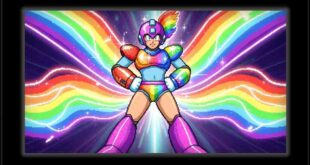An Innocent Gesture with a Dark Twist
For more than two decades, fans of Super Mario World believed Mario was simply pointing forward when Yoshi stuck out his tongue. It looked playful and harmless. Mario gave the signal, Yoshi obeyed, and the duo worked together as partners.
That illusion shattered in 2017, when Nintendo veteran Shigefumi Hino, the designer who created Yoshi, revealed that the original concept was very different. According to Hino, Mario was not pointing at all. He was punching Yoshi in the back of the head to make him lash out. What millions of players thought was a friendly command turned out to be a cartoon act of violence hiding in plain sight.
The revelation instantly reframed decades of player imagination. Instead of a cheerful plumber guiding his dinosaur buddy, fans suddenly saw a hot headed Mario abusing his loyal mount. Something that looked like playful teamwork was exposed as a design decision that carried an entirely different meaning once it was explained.
Yoshi: Loyal Companion or Long-Suffering Sidekick
Ever since his debut in Super Mario World, Yoshi has been one of the most beloved Nintendo characters. The cheerful green dinosaur carried Mario across tricky levels and devoured enemies with his long tongue. Fans interpreted this relationship as one built on trust, where Mario and Yoshi worked side by side to save the day.
But once the punch revelation surfaced, that bond looked much less wholesome. Instead of a willing companion, Yoshi suddenly seemed like a mistreated sidekick, taking blow after blow to the head whenever Mario needed him to act. The cute animation that once looked like friendship began to feel like abuse.
The truth stung because Yoshi was not just another helper character. He had become a star in his own right, headlining spin off titles and cementing himself as one of Nintendo’s mascots. Seeing him reimagined as Mario’s punching bag hit fans especially hard.
The ambiguity of the original animation only fueled the discussion. Even Hino acknowledged that the team had left the gesture deliberately vague, letting players interpret it in their own way. For decades most players saw pointing, but behind the scenes the designers saw something very different.
At first glance this seems like a small detail, but it highlights how tiny design choices can shape a player’s understanding of characters. Mario pointing made him seem like a guide. Mario punching made him a tyrant. Neither changes the mechanics of the game, but each one colors the story in very different ways.
Final Thoughts
Mario punching Yoshi may not rewrite gaming history, but it stands as one of the funniest and most uncomfortable bits of trivia ever revealed about a Nintendo classic. It is hilarious and shocking at the same time. Fans still share it years later as a perfect mix of comedy and disbelief.
It also shows how much weight players put into the tiniest details. A single animation frame defined how millions of people interpreted Mario and Yoshi’s relationship for decades. The story reminds us that perception often matters just as much as developer intent.
Whether you laugh at the absurdity or cringe for poor Yoshi, this revelation is proof that retro gaming still has surprises left to reveal. Even decades later, the truth behind those old pixels can change how we see our favorite characters forever.
 Retro Replay Retro Replay gaming reviews, news, emulation, geek stuff and more!
Retro Replay Retro Replay gaming reviews, news, emulation, geek stuff and more!





